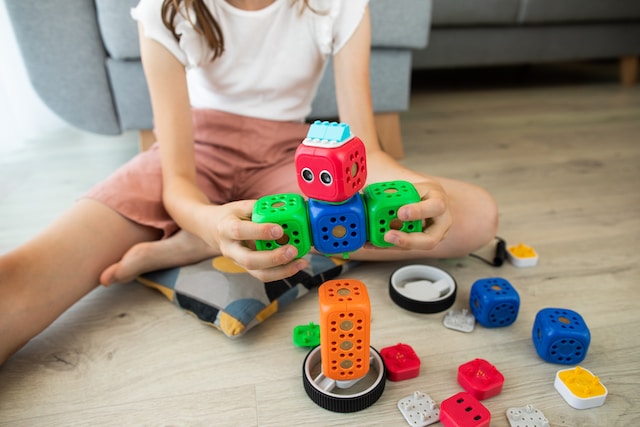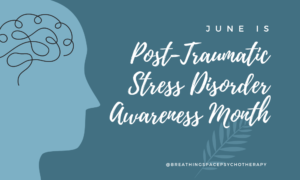The Idea of the Week
Grounding is a self-soothing skill used to bring your awareness to the present moment and current experiences. One powerful grounding skill is engaging with your senses. This 21-minute video shares a variety of often subtle ways to use your senses to ground yourself. Some techniques use external items or the presence of a friend or a pet, and other techniques don’t use any items.
A sensory kit is a grounding toolkit filled with items that help you engage with your senses. This could also have a number of names—anxiety survival kit, grounding kit, stress relief kit, etc.—but the idea is similar: a repertoire of items to engage with your senses and help calm, destress, and ground you.
Practice of the Week
Let’s build our sensory self-soothing kits!
First, let’s consider the purpose of our sensory self-soothing kit.
Reflect on why you want to create a kit.
- What are your needs?
- How will the sensory self-soothing kit meet your needs?
- When and where will you need this kit?
Now, we’ll need a container to hold our items.
When considering a container, think about where you’ll likely need it. Are you traveling? You may want something small and portable. Will you need it at your work desk? You may want a small container that can fit on your desk but not crowd your space. Here are some ideas for what you can use for your container:
- a cookie tin
- a shoe box
- a crafts box from the dollar store
- a sachet
- a small bag
- a basket
Then, let’s find items that help us engage in our senses and put them in our kit. Here are a few ideas and tips to keep in mind as you search for your items:
- In this 10-minute video, Sophie Young shares what they put in their anxiety survival kit for whenever they feel stressed or have an oncoming panic attack.
- In this 13-minute video, Jess from Multiplicity and Me shares what she has in her safety/grounding box that helps stimulate her senses and stay grounded.
- What soothing items will help you engage with your senses of sight, hearing, touch, smell, and taste?
- Think beyond your 5 senses. What soothing items can help you engage with your other senses? For example, a cooling pack for your sense of temperature, and a weighted blanket, a scarf to wrap around your head, or a crystal roller for proprioception (the sense of self-movement and being aware of the body’s position and actions).
- What soothing items can bring you out of your thoughts and worries? For example, maybe your friend won you a stuffed toy duck, so every time you see the stuffed toy duck you’re reminded of the fun day and laughter you shared with your friend.
Finally, we’ll place our sensory kit in an optimal place for when we’ll most need it.
If you travel or walk around, you may want to put it in your purse or backpack. If you work at a desk or a designated area a lot, then maybe you’ll want to place it somewhere on or in the vicinity of your desk. Or, maybe you can designate a place in your living room or bedroom to keep your sensory toolkit.
Remember that this is a process. There is no right or wrong way to make a kit and what you have in your kit is entirely up to you and what you think will help you with your needs. You may add items to your kit that help you or even remove things from your kit that no longer help. No two kits will look the same and you don’t have to add anything to your kit that you don’t want to.
What’s in your sensory kit? Share with us on our Instagram or Facebook page!
News of the Week
Save the Dates!
We will have a Forest Therapy Nature Immersion on November 20, 1-3 pm at Stone Quarry Hill Art Park, Cazenovia.
We will also have a Sound Bath and Reiki on December 3, 3:30-5 pm at the Breathing Space Studio in Erieville.
Caitlin Raab and Kayla Hamilton offer individual therapy on a sliding scale. Read their blurbs below to learn more about what they offer!
Caitlin Raab (she/her) approaches sessions with a focus on introspection, mindfulness, and relaxation strategies. She also focuses on parent and post-partum support, child and teen mental health, and anxiety management.
To learn more about Caitlin, check out her page at breathingspacepsychotherapy.com/caitlin!
Kayla Hamilton (she/her) has an eclectic approach and, most importantly, approaches sessions with where you are at. She focuses on anxiety, life changes and transitions, adolescents and teens, and communication issues.
To learn more about Kayla, check out her page at breathingspacepsychotherapy.com/kayla!
Don’t forget to register for our groups! Registration is still open for our Anxiety Group for Middle School Girls; and The Heart of Intuition, a group to help you explore your intuition. We also have a new Divorce Support Group for Women! Check out the flyers to learn more about these groups.
Divorce Support Group for Women
$50 per session
Some insurances accepted. Limited sliding scale spaces available.
To enroll, please call
(315) 516-8466.
If you have any questions, you can email Caitlin at [email protected]
Anxiety Group for Middle School Girls
This group is HYBRID. You can join online or in-person at the Breathing Space Studio in Erieville!
To register or learn more about this group,
please contact Kayla at [email protected].
The Heart of Intuition
Discovering the treasure of your own intuition
Michael Diamond
October 22- 23, 2022
Breathing Space Studio, Erieville, NY – limited to 16 participants
There’s an awakening happening around the world. More and more modern-day intuitives, mystics, and healers are activating their intuitive abilities, stepping into their power, and becoming a light for others. Can you feel that energy, that connectivity, that anticipation? That’s because you have innate intuition within you—an innate awareness and Divine wisdom that’s waiting to be discovered. It’s time for you to truly embrace it and discover the treasure of your own intuition. Come explore ways to better understand what’s happening in your life and what’s to come in the future. Learn how to hear the powerful messages from your very own intuitive heart.
To register and/or find out more about Michael https://www.michaeldiamondmedium.com/
Have an idea for a group you would like to see? Send your requests in an email to [email protected] with the subject “Group Ideas.”
The Thought of the Week
Wishing you a peaceful week!







